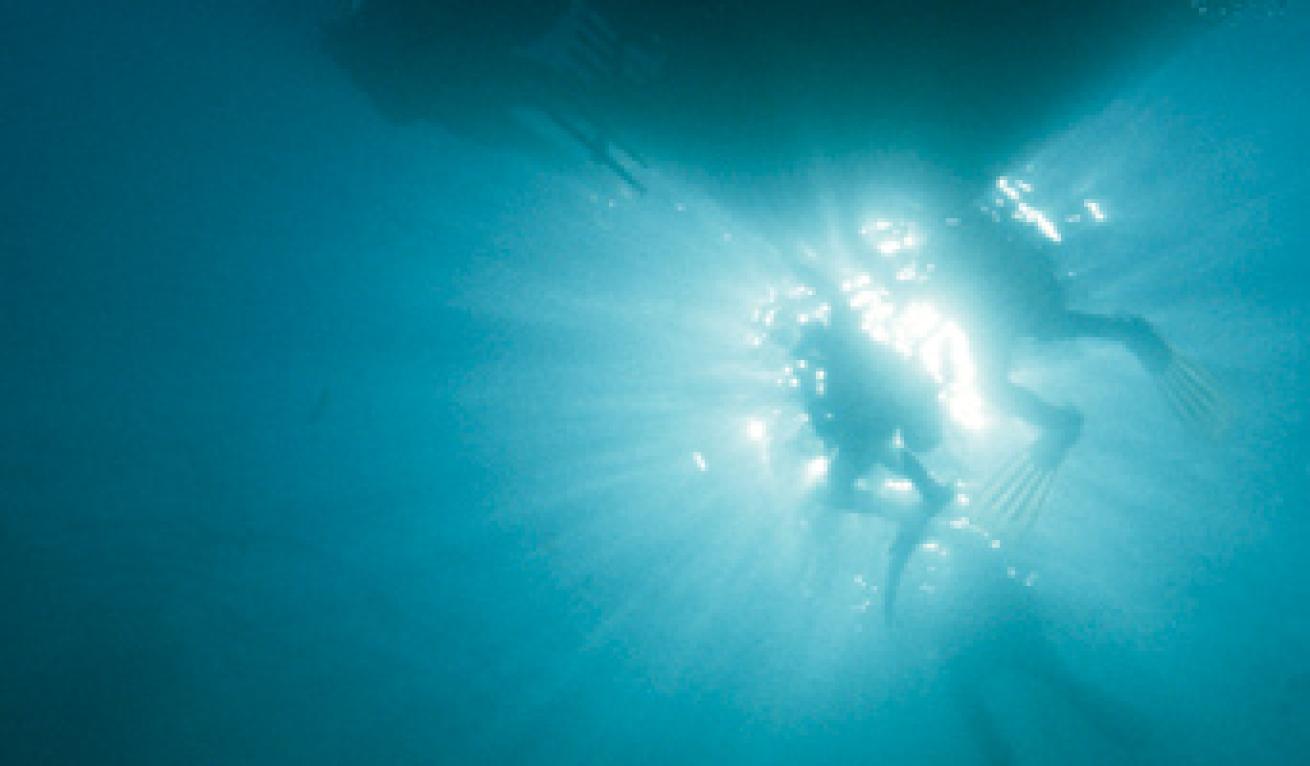Lessons For Life: Out of Shape

Photography by BradleyIreland.com
Sam flailed at the surface, struggling forward against the current. He had never been in good physical shape, and now the extra bulk of the twin tanks on his back and the pony bottles slung underneath each arm seemed to make swimming all the harder. So did the extra air trapped like a balloon in his dry suit. He was making slow headway, but after more than a minute of hard kicking, the anchor line was still far away. Sucking hard against the regulator, he began to feel short of breath, with a painful tightness in his chest. His kicks began to grow weak and he felt hot and flushed in spite of the 53-degree water. Finally, his body went limp as he lapsed into unconsciousness.
The Diver
Sam was in his late thirties and at least 50 pounds overweight. Despite his poor physical conditioning, he was an advanced open-water diver with a few hundred logged dives, and he made frequent dives to keep his water skills current. When Sam decided to pursue technical dive training, medical professionals cautioned him that his weight posed serious risks, but Sam ignored the warnings and adamantly pursued trimix certification.
The Dive
On previous attempts to complete the trimix course, Sam failed due to physical fatigue and discomfort with the bulky gear configuration required for the dive. Determined to complete the class, he traveled to a nearby seaport for another try. The dive was to take place on a popular technical diving site where depths exceed 200 feet in the cold flow of the Labrador current.
When the captain dropped anchor on the site, he noted the swift surface current. Following their usual procedures, the boat crew deployed a tag line behind the boat and a safety line leading from the transom to the anchor line at a depth of 15 feet. The divemaster then gave a detailed briefing, including the proper methods for reaching the anchor line in the current.
The divers began suiting up. Sam wore twin back-mounted cylinders containing a trimix blend with 18 percent oxygen and two 46-cubic-foot stage cylinders — one containing 100 percent oxygen for decompression stops and the other containing nitrox with 32 percent oxygen as a travel gas. As Sam tried to put on his fins while wearing his twin cylinders, a crewmember noted that he was sweating profusely and pulled Sam's dry suit hood back to dump cool water over his head. Several times, the crew and other divers encouraged Sam to slow down and relax. Sam kept insisting that he would be fine once he got in the water, and continued to strap on the rest of his equipment. Still breathing hard, he hurriedly stepped off the stern to join his instructor who was floating at the surface on the tag line.
The Accident
Even though Sam carried nitrox to use as a travel gas for use in shallow water, his girth made it difficult to secure the nitrox regulator and retuck the hose when it was time to switch to his primary cylinders. Instead, he decided to enter the water breathing from his trimix supply. Even though it can be relatively safe to breathe this gas for a short period of time on the surface, the lower oxygen content didn't help Sam catch his breath. The instructor asked Sam if he was sure he was OK to continue, and Sam insisted he would be fine once they got under water.
The dive plan called for Sam and the instructor to descend to the safety line at 15 feet and pull themselves hand-over-hand to the anchor line. The instructor gave the signal and started his descent, but when Sam tried to follow, he failed to deflate his BC fully and found himself buoyed on the surface by excess air in his dry suit.
Sam struggled to kick his overweight body, his dry suit, four scuba tanks and the rest of his technical gear forward against the current. Witnesses said he made little progress and continued to struggle for more than a minute before going "limp in the water." An alert mate quickly jumped in, grabbing Sam's body just before the current carried it past the end of the tag line. With assistance from the boat, he hauled Sam back on board.
The instructor, who had been waiting at the anchor line, surfaced to find the crew administering mouth-to-mouth resuscitation and oxygen to Sam. They were unable to revive him.
Analysis
The autopsy showed that Sam died from a massive heart attack. Although he had medical clearance for the class, he had been to several physicians before he found one willing to sign the medical releases. We will never know for sure, but it's likely that breathing a hypoxic gas under heavy exertion aggravated underlying heart problems. Ultimately, Sam's poor physical condition is probably to blame for his death.
Lessons for Life
Maintain a healthy weight and proper physical conditioning for diving. If you feel ill or even uncomfortable during a pre-dive setup, abort the dive.
Hypoxic trimix blends are used to avoid oxygen toxicity at great depths. These gases should not be used at the surface.
Never struggle against strong currents. Had Sam followed the briefing, he would have used the safety line to reach the anchor line without overexertion.
Instructors shouldn't blindly rely on a physician's medical clearance. Not all physicians understand the physical stresses of diving. It's the instructor's responsibility to exclude from training students who are obviously physically incapable of completing the course.










